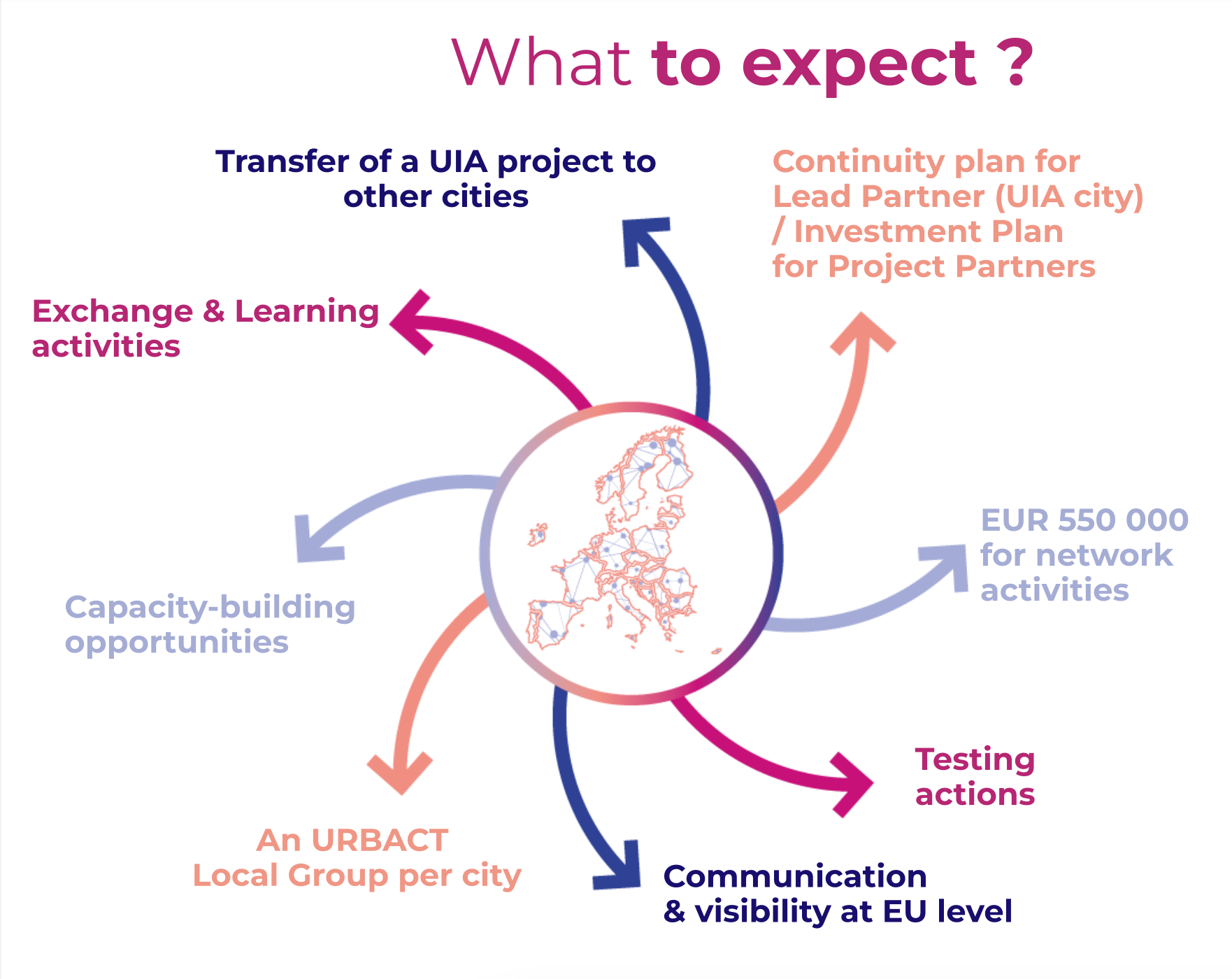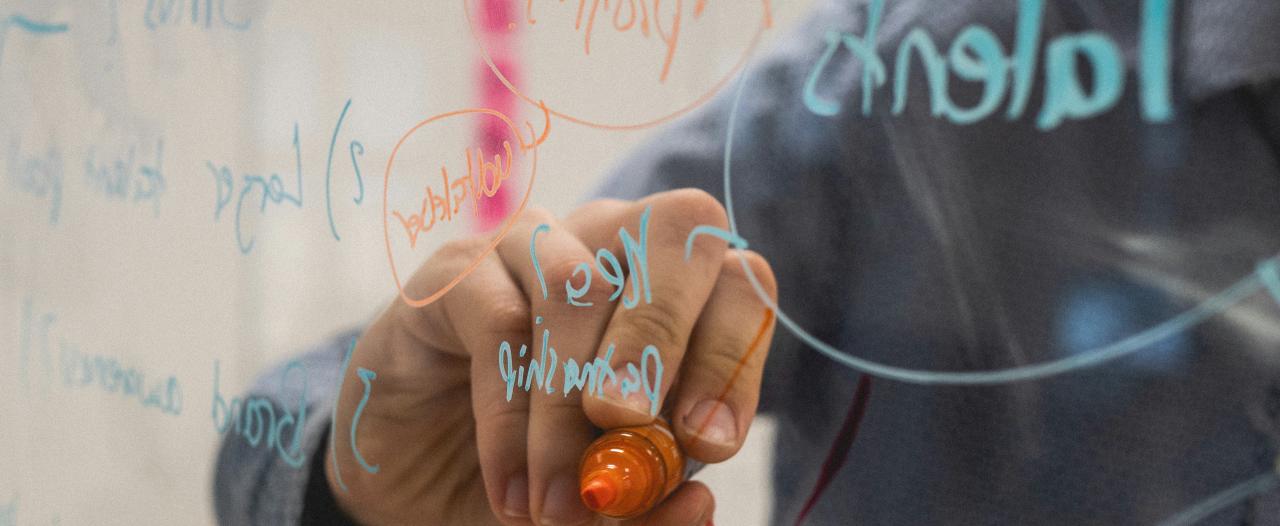From 10 January to 20 March 2024, URBACT is running a call for the next generation of Innovation Transfer Networks (ITNs). These networks aim to transfer projects that were funded under Urban Innovative Actions (UIA) to other cities across the EU, Albania, Bosnia-Herzegovina, Montenegro, North Macedonia and Serbia.
What’s in it for cities?
Through the ITNs, it’s up to the cities who received UIA funding from 2016 to 2023 to act as Lead Partners and to transfer their experience, know-how and advice to cities interested in implementing a similar project. Using the URBACT transfer methodology – Understand, Adapt and Re-use – project partners will create a deeper, three-dimensional understanding of the UIA original practice. Ultimately, the cities in these networks will improve their capacity to design innovative solutions in an integrated and participatory way and identify funding for implementation.
Listen to experts Eddy Adams and Matthew Baqueria-Jackson discuss the Understand, Adapt, Reuse method:
Over a two-year period, through an organised process of exchange and learning among peers, the project partners will work together to develop a tailor-made investment plan for the implementation of the innovation project. This will be done with the support of URBACT experts and anchored by a group of local stakeholders in each city (URBACT Local Group) that gathers different profiles from within and outside the local administration.
In a nutshell, cities involved in this type of networks should expect…

Putting innovation transfer to the test
Replicating innovation is never easy, but between 2021 and 2022, five pilot innovation transfer networks were tasked with testing the URBACT transfer method. Twenty cities in total were involved in these five networks, each one of them led by a city who had implemented an UIA project.
The pilot’s final evaluation proved the URBACT transfer method to be successful, shedding light on some important points to consider:
• Breaking down the UIA practice
A transferable project is one that can be easily modularised. UIA projects are large, complex strategic interventions designed for a specific territory. While wholesale transfer is a rarity, it helps if you can break it down into its core parts. In most of the pilot networks, partners had a pre-defined list of components, which enabled them to select those that would work best in different local contexts. An analysis of the assets and barriers, produced by the network expert, helped guide these choices.
For instance, Rotterdam (NL) was able to adapt an investment plan developed by Birmingham (UK) through the USE-IT! network. Rotterdam customised tools and methods in Birmingham’s investment plan to support the development of a procurement hub for neighbourhood work-cooperatives. Involvement in USE-IT! has also had a profound impact upon partnership working in Rotterdam with enhanced relationships between the Municipality, the Voor Goed Agency that promotes social entrepreneurship, and the Social Impact Fond Rotterdam.
Nevertheless, there are risks that come with modularising. It may be challenging for partners to fully understand each component and reject one or more potentially impactful modules. To mitigate this, most networks offered the option of modules, but included amongst these one which all partners would agree to transfer.
● Building back up
The point has already been made about the importance of chunking up large strategic innovation projects. Think of it like an engineer, dismantling a machine to better understand how all the component parts work – so long as you remember where everything goes when you reassemble it!
This approach is also helpful when transfer partners do not have the scale of funding available. They can pick those elements which they are confident of being able to finance. The risk to be aware of here is that partners may select elements which are easier, or cheaper, and potentially less innovative.
Stepping stones on the transfer path
The URBACT transfer method is composed of different milestones that pave the way to the transfer. The first important milestone is the transferability study. This is composed of information, data, and figures around the topic of the UIA project that are gathered following visits to each network city and with discussions with the city administration, elected officials but also other relevant stakeholders outside the city administration. All the data gathered and analysed constitute a baseline for each city, but they also indicate the transfer potential of each city, with strengths and weaknesses that need to be further worked on. This transferability study becomes the reference for the way forward in terms of network activities and learning points before the actual transfer.
Other milestones include capacity-building activities organised by the URBACT Secretariat, trainings with tools or thematic sessions and events like the URBACT City Festival which is a source of inspiration for cities.
Finally, the main tangible result of each project partner is an investment plan that features all the necessary resources and steps to follow for the implementation of the UIA practice (partly or fully).
Show me the money
Transferring innovative urban solutions is very rarely a copy-and-paste process. A degree of adaptation and reuse is still needed for genuine transformation. Reuse requires resources – people, plans and, most crucially, funding.
A new feature for the upcoming networks, cities will also have the possibility of testing actions with a small budget before including them in the investment plan.
At the end of the five pilot networks, more than three-quarters of partners said that they would transfer at least 50% of the original UIA innovation concept. The survey also showed that 15% of the partners already had secured funds for this, whilst almost half were confident that their transfer plans would be funded by the time the pilot concluded.
So, where do you sign up?
If this article has whetted your appetite, then you might like to know how your city can get involved.
If you are a city interested in becoming a transfer partner, you can connect here from 10 January and find the necessary resources on how you can apply by 20 March 2024.
And don’t forget to sign up for the URBACT newsletter and follow us @URBACT to get updates.
We look forward to welcoming you to the URBACT community,
The URBACT team
Special thanks to Eddy Adams for bringing together the findings of the evaluation of the previous pilot networks in this article.


